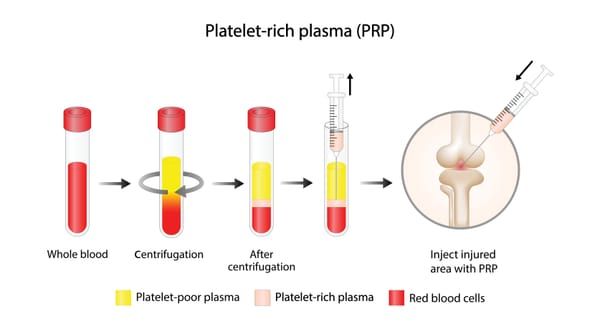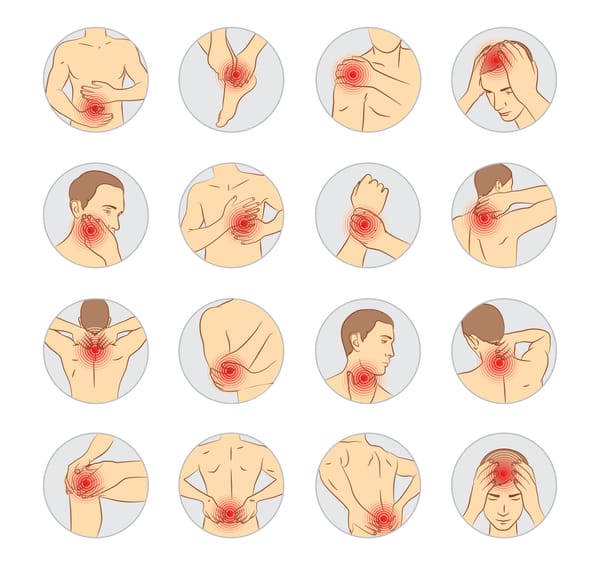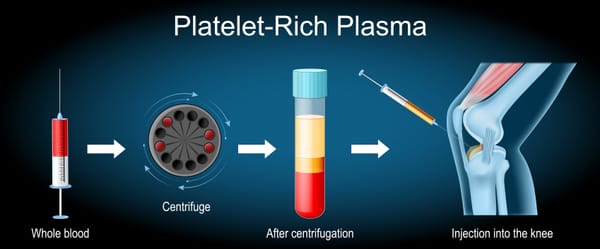Intrathecal Pain Pumps: A Targeted Solution for Cancer Pain Relief

For cancer patients, chronic pain can be an overwhelming burden, affecting everything from mobility to emotional well-being. Whether caused by tumors, metastases, or treatment side effects, severe pain often resists standard treatments like oral medications or injections.
Intrathecal pain pumps provide a highly effective, targeted approach to manage this pain, delivering medication directly to the spinal cord with minimal side effects.
In this blog post, we’ll explore what intrathecal pain pumps are, how they help cancer patients, and what to expect.
The Reality of Cancer-Related Pain
Cancer pain is complex and can arise from multiple sources:
- Tumor-Related Pain: Tumors pressing on bones, nerves, or organs, such as bone metastases in breast or prostate cancer, or visceral pain from pancreatic or liver tumors.
- Treatment Side Effects: Neuropathy from chemotherapy, post-surgical pain, or inflammation from radiation.
- Neuropathic Pain: Burning or tingling from nerve damage caused by tumors or therapies.
- Musculoskeletal Pain: Aches from immobility, bone loss (e.g., due to hormone therapy), or joint stiffness.
Pain affects 50-90% of patients with advanced cancer, with 30-50% experiencing moderate to severe pain, per a 2019 study in Journal of Pain and Symptom Management. When oral or intravenous medications lead to side effects like sedation, nausea, or constipation, or fail to provide sufficient relief, intrathecal pain pumps offer a transformative option, particularly for those in palliative care.
What is an Intrathecal Pain Pump?
An intrathecal pain pump, also known as an intrathecal drug delivery system (IDDS), is a small, implantable device that delivers pain medication directly into the intrathecal space—the fluid-filled area surrounding the spinal cord. The system consists of:
- A Pump: A battery-powered device, roughly the size of a hockey puck, implanted under the skin, typically in the abdomen.
- A Catheter: A thin tube that carries medication from the pump to the spinal cord.
- A Reservoir: Stores medications like opioids (e.g., morphine), local anesthetics (e.g., bupivacaine), or non-opioids (e.g., ziconotide), refilled periodically.
The pump is programmed to deliver precise, controlled doses tailored to the patient’s pain needs. By targeting the spinal cord directly, it requires much lower doses—often 1/100th of oral doses—reducing systemic side effects.
How Intrathecal Pain Pumps Help Cancer Pain
Intrathecal pumps deliver medication to the spinal cord, where pain signals are processed, offering several key benefits:
- Effective Pain Relief: Targets severe pain from tumors, metastases, or neuropathy at its neurological source.
- Fewer Side Effects: Lower doses minimize systemic effects like drowsiness, nausea, or constipation compared to oral or IV opioids.
- Customizable Dosing: Pumps can provide continuous or patient-controlled (bolus) doses, adjustable to changing pain levels.
- Improved Quality of Life: Better pain control enhances sleep, mobility, and emotional well-being, crucial for cancer patients.
Pumps are typically considered for patients with:
- Severe, chronic pain not controlled by oral or IV medications.
- Significant side effects from systemic drugs.
- Pain from tumors, metastases, or treatment-related complications.
- A life expectancy of at least a few months to justify implantation.
What Does the Evidence Show?
Research highlights intrathecal pain pumps as a highly effective option for cancer pain, particularly in advanced disease. Key findings include:
- Pain Reduction: A 2020 study in Pain Medicine found that 70-80% of cancer patients with pumps achieved at least 50% pain reduction within 1-2 weeks, with relief lasting months.
- Reduced Opioid Use: A 2018 meta-analysis in Journal of Clinical Oncology showed that pumps cut systemic opioid use by 50-75%, decreasing side effects like sedation and constipation.
- Enhanced Function: A 2019 study in Supportive Care in Cancer reported that 60-70% of patients experienced improved mobility, mood, and sleep, enhancing palliative care outcomes.
- Long-Term Efficacy: A 2021 review in Pain Management noted that pumps provide consistent relief for patients with life expectancies beyond 3-6 months, with refills every 1-3 months.
- Patient Perspectives: On platforms like Reddit, patients and caregivers describe pumps as “life-changing,” with some regaining the ability to enjoy daily activities, though maintenance and adjustments are common concerns.
Pumps are most effective for nociceptive (tumor-related) or mixed pain but may be less effective for purely neuropathic pain. Outcomes depend on proper patient selection, pain type, and device management.
What to Expect from an Intrathecal Pain Pump
Here’s an overview of the process:
- Pre-Procedure: Your doctor will review your pain history, medical condition, and imaging (e.g., MRI or CT) to confirm suitability. A trial injection, using a temporary catheter to deliver intrathecal medication, is often performed to test efficacy and tolerability. If the trial significantly reduces pain with minimal side effects, a permanent pump may be recommended.
- Implantation: Under general anesthesia, a pain specialist or neurosurgeon implants the pump under the skin (typically in the abdomen) and threads a catheter to the intrathecal space. The procedure takes 1-2 hours, with a hospital stay of 1-2 days.
- Recovery: Mild soreness or swelling at the incision site is common for 1-2 weeks. Strenuous activity is avoided for 6-8 weeks to allow healing. Pain relief often begins within days, with dosing fine-tuned over weeks.
- Maintenance: The pump’s reservoir is refilled every 1-3 months via a needle in an outpatient visit. The battery lasts 5-7 years, requiring surgical replacement. Regular check-ups monitor dosing and device function.
- Side Effects: Common side effects include temporary soreness or swelling. Rare risks (1-2%) include infection, catheter blockage, spinal fluid leaks, or pump malfunction, minimized by experienced providers.
Benefits and ConsiderationsBenefits:
- Significant pain relief, often 50-80% reduction, improving comfort and function.
- Lower medication doses reduce systemic side effects like sedation or nausea.
- Adjustable dosing adapts to fluctuating pain needs.
- Long-term solution for chronic cancer pain, especially in palliative care.
- Enhances participation in daily activities or complementary therapies.
Considerations:
- Surgical risks include infection, bleeding, or catheter issues, though rare with skilled teams.
- Requires ongoing maintenance (refills, monitoring) and potential pump replacement.
- Costs range from $10,000-$30,000 for implantation, plus maintenance, though insurance often covers it for cancer pain with medical necessity.
- Not suitable for patients with very short life expectancy (<3 months) or active infections.
- May not fully address neuropathic pain, requiring additional treatments.
Is an Intrathecal Pain Pump Right for You?
Intrathecal pain pumps are typically considered for cancer patients with:
- Severe, chronic pain not controlled by oral or IV medications.
- Significant side effects from systemic drugs.
- Pain from tumors, metastases, or treatment-related complications.
- A life expectancy of at least a few months to justify the procedure.
Your healthcare team, including oncologists, pain specialists, or palliative care providers, will evaluate:
- The nature and severity of your pain, using exams, imaging, or trial injections.
- Your overall health, including cancer stage and treatment plan.
- Your goals, such as improved comfort, reduced medication use, or better quality of life.
Discuss the procedure’s risks, benefits, and maintenance needs with your provider. Choosing a center with expertise in intrathecal pumps is essential for safety and success.
Complementary Treatments
Intrathecal pumps are often part of a broader pain management plan, including:
- Medications: Low-dose oral or topical drugs (e.g., gabapentin for neuropathic pain) for residual symptoms.
- Palliative Care: Holistic support for pain, emotional needs, and quality of life.
- Interventional Procedures: Nerve blocks, radiofrequency ablation, or spinal cord stimulation for specific pain types.
- Physical Therapy: Gentle exercises to maintain mobility, if feasible.
- Psychological Support: Counseling, mindfulness, or support groups to address pain’s emotional impact.
A 2021 study in Journal of Clinical Oncology found that combining intrathecal pumps with palliative care reduced pain severity by 40-60% in advanced cancer patients, highlighting the power of a team approach.
Living with Cancer Pain
Cancer pain can be physically and emotionally draining, affecting sleep, relationships, and daily life. Intrathecal pain pumps offer hope for reclaiming comfort and dignity. Share your pain’s details—intensity, location, and impact—with your healthcare team to guide treatment. Support groups, through organizations like CancerCare (cancercare.org) or the American Cancer Society, or online platforms like Reddit, provide a space to connect with others and share coping strategies.
Emotional support is crucial, as pain can amplify stress or isolation. Lean on counselors, family, or palliative care teams for comfort. Practical steps, like pacing activities or using relaxation techniques, can also help.
Why Awareness Matters
Pain is a major concern for 50-90% of advanced cancer patients, yet it’s often undertreated due to stigma, fear of opioids, or lack of access to advanced options like intrathecal pumps, per a 2020 review in The Lancet Oncology. Raising awareness about these devices empowers patients to explore effective solutions and advocate for better care.
If you or a loved one is struggling with cancer-related pain, talk to your oncologist, pain specialist, or palliative care team about whether an intrathecal pain pump could be an option. Resources like the National Cancer Institute (cancer.gov) or CancerCare offer valuable information and support.
By spotlighting treatments like intrathecal pain pumps, we can enhance quality of life and bring hope to those facing cancer pain. Let’s keep the conversation going—no one should endure this pain alone.
Disclaimer: This blog post is for informational purposes only and not a substitute for professional medical advice. Consult a healthcare provider before considering an intrathecal pain pump or any new treatment for cancer pain.



